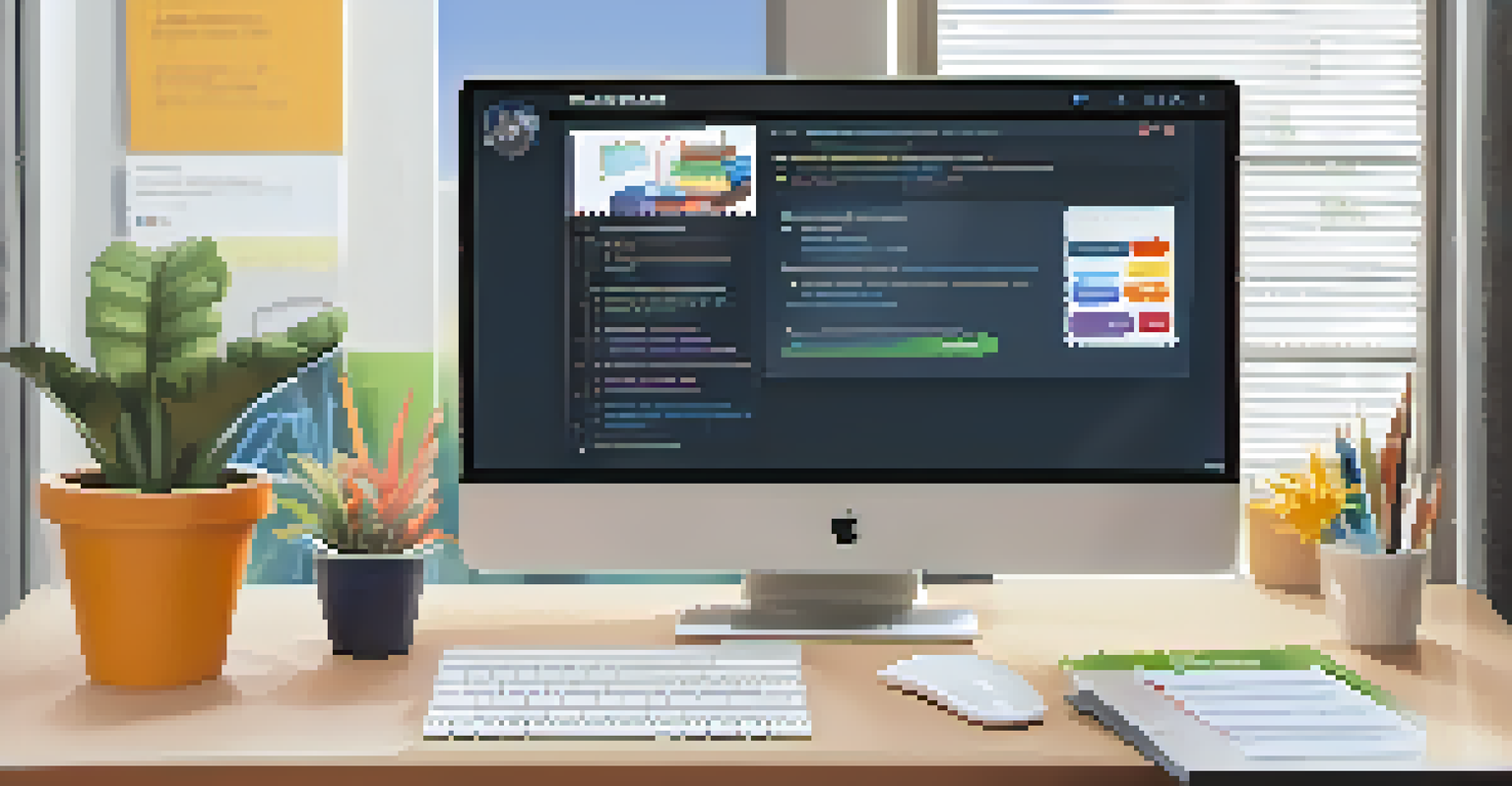Cognitive Load Theory: Balancing Instruction for Better Learning

Understanding Cognitive Load Theory and Its Importance
Cognitive Load Theory (CLT) explains how our brain processes information during learning. It emphasizes the limitations of working memory, which can only hold a certain amount of information at once. By understanding these limitations, educators can design instructional materials that better cater to how students learn.
The mind is not a vessel to be filled, but a fire to be kindled.
Imagine trying to juggle three balls while learning to ride a bike; the more you add, the harder it becomes. Similarly, CLT helps educators avoid overwhelming students with excessive information, which can lead to confusion and frustration. This understanding is crucial for creating effective learning experiences.
Ultimately, by recognizing the importance of cognitive load, educators can strike a balance between challenge and support, leading to more effective learning outcomes. It's like finding the sweet spot in a game; too easy, and it’s boring; too hard, and it’s discouraging.
Types of Cognitive Load: Intrinsic, Extraneous, and Germane
Cognitive load can be categorized into three types: intrinsic, extraneous, and germane. Intrinsic load refers to the complexity of the material itself, such as learning algebra versus basic addition. This load is inherent to the content and cannot be changed easily.

Extraneous load, on the other hand, refers to how information is presented. For example, a cluttered slide with too much text can distract students, increasing their cognitive load unnecessarily. By simplifying presentations and focusing on clarity, educators can help students concentrate on the essential material.
Cognitive Load Shapes Learning
Understanding Cognitive Load Theory helps educators design materials that align with how students process information.
Lastly, germane load is the mental effort dedicated to processing, understanding, and integrating new information. This type of load is beneficial, as it promotes learning. Balancing these three loads is key to creating an effective learning environment.
The Role of Working Memory in Learning
Working memory plays a pivotal role in how we learn and retain information. It’s like a mental workspace where we manipulate and store information temporarily. Understanding its limitations is crucial for educators aiming to optimize instruction.
Learning is not the product of teaching. Learning is the product of the activity of learners.
For instance, if a student is presented with too many concepts at once, their working memory can become overloaded, leading to poor retention. By breaking information into manageable chunks, teachers can help students better grasp and remember the material, akin to assembling a puzzle piece by piece.
Furthermore, effective instructional design can enhance working memory capacity. Techniques like spaced repetition and retrieval practice encourage deeper engagement, allowing students to transfer knowledge from working memory to long-term storage more efficiently.
Strategies to Reduce Extraneous Cognitive Load
Reducing extraneous cognitive load is essential for enhancing learning experiences. One effective strategy is to streamline instructional materials, ensuring that only relevant information is presented. This can be done by using clear visuals and concise text.
For example, consider the difference between a cluttered infographic and a well-organized diagram. The latter can help students focus on key concepts without distraction, making it easier for them to absorb information. This simplicity promotes a more productive learning environment.
Types of Cognitive Load Explained
Cognitive load can be classified into intrinsic, extraneous, and germane types, each influencing learning differently.
Additionally, providing clear instructions and examples can further minimize extraneous load. When students know what to expect and how to approach a task, they can devote more mental energy to understanding the content, leading to better learning outcomes.
Enhancing Germane Cognitive Load for Deeper Learning
To foster deeper learning, educators should aim to enhance germane cognitive load. This can be achieved through activities that encourage critical thinking and problem-solving. For instance, group discussions or project-based learning can stimulate students to engage with the material actively.
Think of germane load as the fuel that drives meaningful learning. Just as a plant needs sunlight and water to grow, students require engaging tasks to cultivate their understanding. By incorporating activities that challenge students intellectually, educators can promote a richer learning experience.
Moreover, providing opportunities for self-explanation and reflection can deepen understanding. When students articulate their thought processes or relate new information to prior knowledge, they reinforce their learning and build connections that aid retention.
The Importance of Scaffolding in Education
Scaffolding is a teaching method that supports students as they develop new skills and knowledge. It involves providing temporary help until learners can perform tasks independently. This approach aligns perfectly with Cognitive Load Theory by managing intrinsic load effectively.
For example, in a math class, a teacher might first demonstrate a new concept before guiding students through practice problems. This step-by-step support helps reduce cognitive overload, as students gradually build their understanding. It’s much like learning to ride a bike with training wheels before going solo.
Scaffolding Supports Learning
Scaffolding provides temporary support to students, reducing cognitive overload and fostering independent learning.
As students gain confidence and skills, the scaffolding can be gradually removed, empowering them to tackle challenges independently. This not only enhances learning but also fosters a sense of accomplishment, motivating students to persist in their efforts.
Applying Cognitive Load Theory in Online Learning Environments
With the rise of online learning, applying Cognitive Load Theory has become more important than ever. Digital platforms can either enhance or hinder learning experiences, depending on how content is presented. Educators must be mindful of cognitive load when designing online courses.
For instance, incorporating interactive elements, such as quizzes or discussion forums, can engage students and reduce extraneous load. These features encourage active participation and help learners absorb information more effectively, turning passive viewers into engaged participants.

Moreover, using multimedia wisely can enhance learning. Videos, infographics, and interactive simulations can clarify complex concepts while maintaining an appropriate cognitive load. Ultimately, the goal is to create an online learning environment that is both engaging and effective.